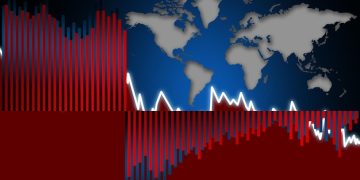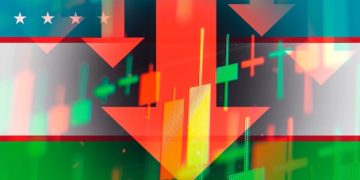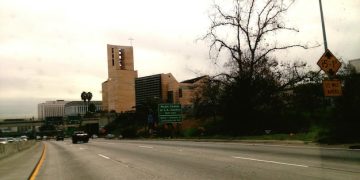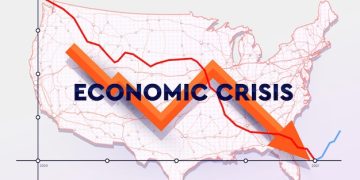Global Economic Slowdown: US Economy Forecast for 2025

The Impact of Global Economic Slowdown on the US Economy: What to Expect in 2025 involves evaluating potential recessionary pressures, shifts in trade dynamics, and adjustments in monetary policy, all crucial for understanding future economic stability and growth within the United States.
The looming question on many minds is: What will the Impact of Global Economic Slowdown on the US Economy: What to Expect in 2025? Prepare to navigate the complexities of this pressing issue with a deep dive into future economic forecasts.
Understanding the Global Economic Slowdown
A global economic slowdown refers to a widespread deceleration in economic growth across multiple countries. These slowdowns are often characterized by reduced trade, decreased investment, and lower consumer spending. Understanding the factors that contribute to this slowdown is critical for anticipating its effects on the US economy.
Key Indicators of a Global Slowdown
Several key indicators can signal an impending global economic slowdown. Tracking these indicators helps policymakers and businesses prepare for potential challenges.
- Declining Manufacturing Output: A decrease in manufacturing output worldwide often precedes broader economic downturns.
- Falling Commodity Prices: Lower demand for raw materials and energy resources can indicate a slowdown in global industrial activity.
- Increased Unemployment Rates: Rising unemployment in major economies suggests weakening labor markets and reduced consumer spending.
Geopolitical Factors and Their Impact
Geopolitical tensions and trade disputes can significantly exacerbate a global economic slowdown. These factors create uncertainty and disrupt international trade and supply chains.
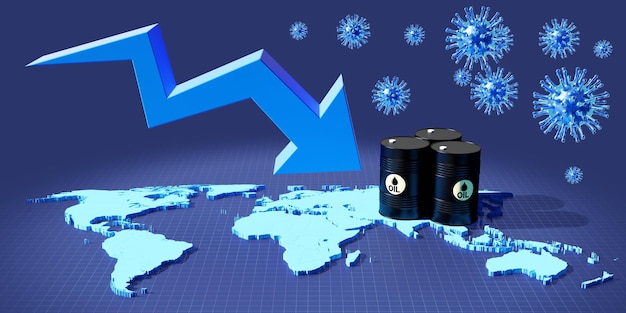
The interconnected nature of the global economy means that economic problems in one region can quickly spread to others. Monitoring geopolitical developments is essential for understanding the potential impact on the US economy.
In conclusion, a global economic slowdown is a complex phenomenon driven by various factors. By closely monitoring key indicators and geopolitical developments, we can better understand and prepare for its potential impact on the US economy.
Potential Impacts on US Economic Sectors
The US economy, while robust, is not immune to global economic headwinds. Several sectors could experience significant impacts from a global slowdown, including manufacturing, technology, and agriculture.
Manufacturing and Industrial Production
The manufacturing sector is highly sensitive to changes in global demand. A slowdown in international trade can lead to reduced exports and lower production levels.
Lower demand from key trading partners can force US manufacturers to cut production, leading to job losses and reduced investment. Government policies aimed at supporting domestic manufacturing can help mitigate some of these effects.
The Tech Sector’s Exposure
The technology sector, while innovative and dynamic, is also vulnerable to global economic conditions. Decreased consumer spending and reduced business investment can impact tech companies’ revenues and growth prospects.
- Reduced Venture Capital Funding: During a slowdown, venture capitalists may become more cautious, leading to less funding for startups and tech companies.
- Decline in Consumer Electronics Sales: As consumers tighten their belts, spending on non-essential items like consumer electronics may decline.
- Slower Adoption of New Technologies: Businesses may delay investments in new technologies due to economic uncertainty.
Agricultural Exports and Trade
The agricultural sector relies heavily on exports to maintain its profitability. A global slowdown can disrupt trade flows and reduce demand for US agricultural products.
Trade disputes and protectionist measures can further exacerbate these challenges, making it more difficult for US farmers to compete in international markets. Government support programs and efforts to diversify export markets can help buffer the impact.
In summary, the US economy’s manufacturing, technology, and agricultural sectors face potential challenges from a global economic slowdown. Understanding these vulnerabilities is key to developing effective mitigation strategies.
Monetary and Fiscal Policy Responses
In response to a global economic slowdown, governments and central banks often implement monetary and fiscal policies to stimulate economic activity and support growth. Understanding these policy responses is crucial for assessing their potential effectiveness.
Federal Reserve’s Role
The Federal Reserve plays a critical role in managing the US economy during a slowdown. The Fed can use various tools to influence interest rates and credit conditions.
Lowering interest rates can encourage borrowing and investment, while quantitative easing can increase the money supply. The Fed’s actions aim to boost economic activity and prevent a deeper recession.
Fiscal Stimulus Packages
Governments may implement fiscal stimulus packages to boost demand and support employment. These packages can include tax cuts, infrastructure spending, and unemployment benefits.
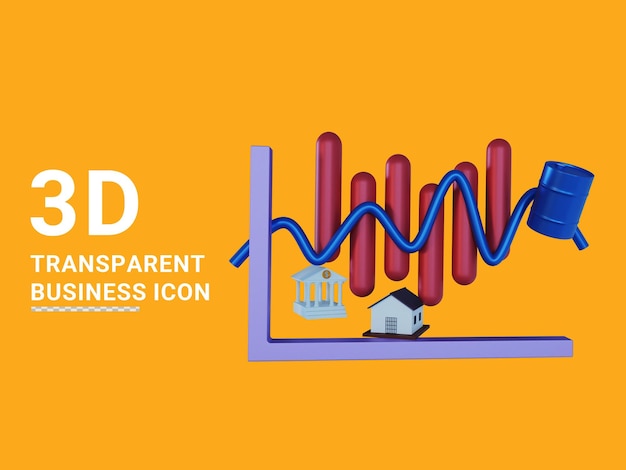
Effective fiscal policy can provide a much-needed boost to the economy during a downturn. However, it’s essential to consider the potential long-term effects on government debt and deficits.
International Policy Coordination
Global economic slowdowns often require coordinated policy responses from multiple countries. International cooperation can help stabilize financial markets and promote trade.
Agreements on trade policies and coordinated fiscal stimulus can be more effective than unilateral actions. International organizations like the IMF and World Bank play a key role in facilitating this coordination.
In essence, monetary and fiscal policy responses are vital tools for managing the impact of a global economic slowdown on the US economy. Coordinated international efforts can enhance the effectiveness of these policies.
Consumer Behavior and Spending Trends
Consumer behavior plays a significant role in shaping economic outcomes during a slowdown. Shifts in spending patterns and consumer confidence can amplify or mitigate the effects of economic challenges.
Changes in Consumer Spending Habits
During a slowdown, consumers tend to become more cautious with their spending. They may reduce discretionary spending and prioritize essential goods and services.
- Increased Savings Rates: As economic uncertainty rises, consumers may increase their savings rates as a precautionary measure.
- Shift to Value-Oriented Purchases: Consumers may switch to cheaper brands or seek out discounts and promotions.
- Decline in Big-Ticket Purchases: Purchases of expensive items like cars and appliances may decline as consumers postpone major investments.
Impact on Retail and Services
The retail and services sectors are particularly vulnerable to changes in consumer spending. Reduced demand can lead to lower revenues and job losses.
Businesses in these sectors may need to adapt their strategies to attract and retain customers. Offering competitive prices, enhancing customer service, and leveraging online sales channels can help mitigate the impact.
Consumer Confidence and Economic Sentiment
Consumer confidence is a key indicator of economic health. Low consumer confidence can depress spending and investment, while high confidence can boost economic activity.
Monitoring consumer confidence surveys and sentiment indicators can provide valuable insights into the potential direction of the economy. Policymakers and businesses can use this information to adjust their strategies accordingly.
In summary, consumer behavior and spending trends are critical factors in understanding the impact of a global economic slowdown on the US economy. Monitoring these trends and adapting to changes in consumer preferences is essential for navigating economic challenges.
Investment Strategies for Navigating Uncertainty
During times of economic uncertainty, it’s crucial for investors to adopt strategies that can protect their portfolios and potentially capitalize on opportunities. Diversification, risk management, and long-term planning are essential components of a successful investment strategy.
Diversification and Asset Allocation
Diversifying investments across different asset classes can help reduce risk. Allocating investments to stocks, bonds, real estate, and commodities can provide a buffer against market volatility.
Adjusting asset allocation based on economic conditions and risk tolerance is also important. During a slowdown, investors may consider increasing their allocation to more conservative assets like bonds and dividend-paying stocks.
Defensive Investment Sectors
Some sectors tend to perform better than others during economic downturns. These defensive sectors include healthcare, consumer staples, and utilities.
Investing in companies that provide essential goods and services can provide a stable source of income and protect against market declines. These sectors are less sensitive to changes in consumer spending and economic activity.
Long-Term Investment Perspective
Maintaining a long-term investment perspective is crucial during times of uncertainty. Avoid making rash decisions based on short-term market fluctuations.
Focus on the fundamental strengths of your investments and their long-term growth potential. Staying disciplined and patient can help you weather the storm and achieve your financial goals.
To conclude, adopting sound investment strategies is essential for navigating the uncertainty of a global economic slowdown. Diversification, defensive sectors, and a long-term perspective can help protect your portfolio and position you for future success.
Long-Term Outlook for the US Economy
Assessing the long-term outlook for the US economy amidst a global slowdown requires careful consideration of various factors. These include innovation, demographic shifts, and policy reforms.
The Role of Innovation and Technology
Innovation and technological advancements can drive long-term economic growth. Investing in research and development and fostering a culture of innovation can help the US economy adapt to changing global conditions.
Emerging technologies like artificial intelligence, biotechnology, and renewable energy have the potential to create new industries, jobs, and sources of economic value. Policies that support innovation and entrepreneurship can boost the long-term outlook.
Demographic Trends and Labor Force
Demographic trends, such as an aging population and changes in labor force participation, can impact long-term economic growth. Adapting to these trends requires addressing issues like skills training, immigration, and healthcare.
Investing in education and skills development can help ensure that the labor force is prepared for the jobs of the future. Immigration reform can also help address labor shortages and boost economic growth.
Policy Reforms and Structural Changes
Policy reforms and structural changes can improve the long-term competitiveness and resilience of the US economy. These reforms can include tax policies, regulatory changes, and infrastructure investments.
Creating a stable and predictable policy environment can encourage investment and innovation. Addressing structural weaknesses in the economy can help improve its long-term growth potential.
Based on these factors, the long-term outlook for the US economy depends on our ability to adapt, innovate, and implement effective policies. By addressing the challenges and leveraging the opportunities, we can ensure sustained economic growth and prosperity.
| Key Point | Brief Description |
|---|---|
| 📉 Global Slowdown | Reduced trade, investment, and consumer spending worldwide. |
| 🛠️ Policy Responses | Monetary and fiscal policies to stimulate US economic activity. |
| 🛒 Consumer Behavior | Cautious spending, increased savings, shifting purchase patterns. |
| 📈 Long-Term Growth | Innovation, demographic shifts, and policy reforms are key. |
Frequently Asked Questions
▼
A global economic slowdown is a widespread deceleration in economic growth across many countries, characterized by reduced trade, investment, and consumer spending, affecting international commerce.
▼
It can affect the US economy through reduced exports, decreased investment, and potential job losses in sectors like manufacturing and technology, influenced by international market conditions.
▼
Monetary policies by the Federal Reserve, fiscal stimulus packages by the government, and international policy coordination can help stabilize financial markets and support economic activity.
▼
Consumers may react by becoming more cautious with spending, increasing savings, looking for value-oriented purchases, and postponing major investments due to economic uncertainty.
▼
Suitable investment strategies include diversifying portfolios, focusing on defensive sectors, and maintaining a long-term perspective to navigate market volatility and ensure financial stability.
Conclusion
In conclusion, understanding the Impact of Global Economic Slowdown on the US Economy: What to Expect in 2025 requires a comprehensive approach, considering various factors such as economic indicators, policy responses, consumer behavior, investment strategies, and long-term trends. By staying informed, adaptable, and proactive, businesses, policymakers, and individuals can navigate the challenges and seize opportunities that arise during times of uncertainty.
